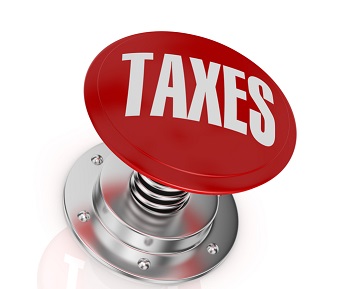Dutch government to alleviate tax burden on labour in 2015
By: Together Abroad 20-10-2014

Reducing the tax burden on labour
The government will make work more profitable next year by significantly increasing the employed person’s tax credit. Five million euros will be set aside for this measure on a structural basis. This incentive is in addition to the increase in the employed person’s tax credit announced in the 2014 Tax Plan. In total, the benefit to employees will rise to about €500.
The lowest rate of income tax will be 36.5% next year. This is an increase of 0.25 percentage points on 2014 but is lower than the 36.76% rate initially proposed for 2015. The government has made available €500 million to limit the increase in the lowest rate of income tax. Other income tax rates will remain unchanged.
There will be a slightly sharper reduction in the general tax credit next year. People with incomes in excess of €20,000 will be entitled to a lower general tax credit. As the 2014 Tax Plan had included a sharp increase in the general tax credit, however, people with incomes of up to €52,000 will still enjoy a higher general tax credit next year than in 2014.
Simplification of the tax system
Where possible, the 2015 Tax Plan includes preliminary measures to simplify the tax system. The work-related costs scheme will be adapted and introduced in its definitive form. The substantial simplification this entails will reduce the administrative burden for employers and make the scheme easier to implement by the Tax and Customs Administration. The current optional regime of two work-related costs schemes will no longer be necessary. Abolition of the optional regime next year will significantly cut the Tax and Customs Administration’s implementation costs.
The use of valuation reports to establish the car and motorcycle tax payable on imported used cars will be restricted. As from next year, valuation reports will be used only for damaged vehicles and vehicles that are uncommon in the Netherlands. The value of all other cars will be determined by means of a standard valuation table or a generally applicable price list. This restriction of the use of valuation reports will simplify the Tax and Customs Administration’s work and combat misuse of the rules.
Measures in 2016
The Tax Plan also contains a number of measures that will come into effect in 2016. One of them is the abolition of the additional tax allowance available to elderly people on their savings and investments in box 3. Elderly people will be entitled to the same tax allowance as other people. Another measure that will come into effect in 2016 will reduce the elderly person’s tax credit by €83 to €970 for those with an income of up to €36,200 and by €70 for those with incomes above this amount. Both measures are part of a package that will serve as an alternative to the household benefit, which will not be introduced.
Source: Rijksoverheid.nl